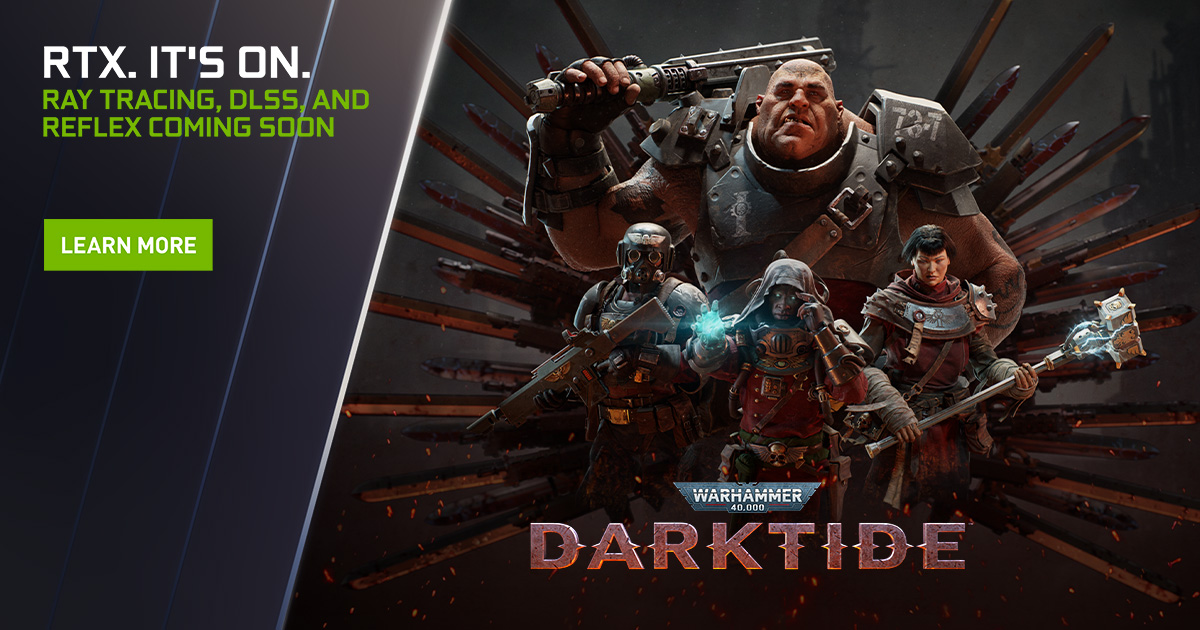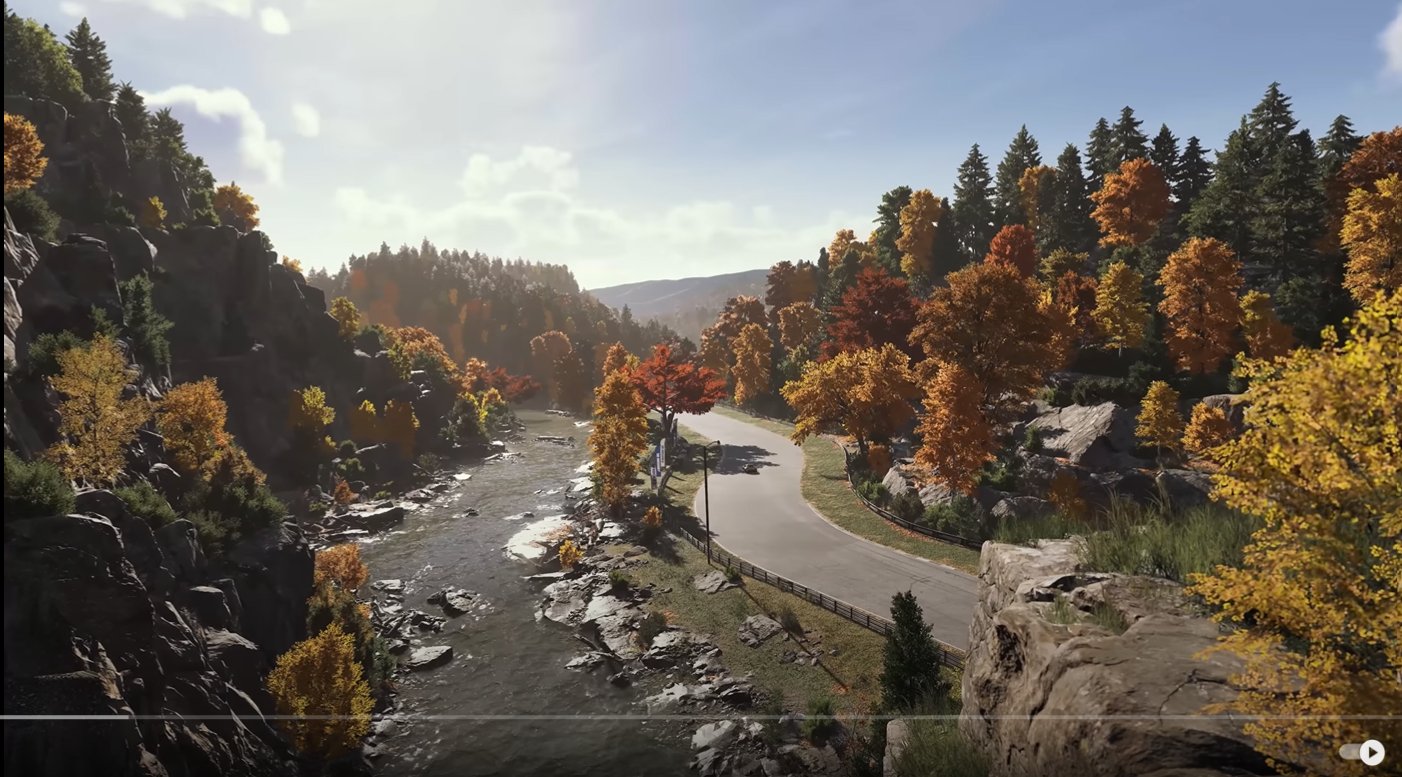Very interesting, first use of RTXGI in a bigger game release!
Warhammer 40,000: Darktide Launches November with NVIDIA DLSS, NVIDIA Reflex & Ray Tracing
Amp up performance, minimize system latency, and experience advanced ray-traced effects at their highest detail levels with a GeForce RTX graphics card, desktop or laptop.www.nvidia.com
Install the app
How to install the app on iOS
Follow along with the video below to see how to install our site as a web app on your home screen.
Note: This feature may not be available in some browsers.
You are using an out of date browser. It may not display this or other websites correctly.
You should upgrade or use an alternative browser.
You should upgrade or use an alternative browser.
GART: Games and Applications using RayTracing
- Thread starter BRiT
- Start date
- Status
- Not open for further replies.
DegustatoR
Legend
Capcom updated PC versions of Resident Evil 7/2/3 with raytracing support - noteably GI and reflections, similar to those found in RE Village.
Interesting - with RT reflections and "RTXGI"
Warhammer 40,000: Darktide Launches November with NVIDIA DLSS, NVIDIA Reflex & Ray Tracing
Amp up performance, minimize system latency, and experience advanced ray-traced effects at their highest detail levels with a GeForce RTX graphics card, desktop or laptop.www.nvidia.com
Does that mean DDGI?
Also since this is Fatshark, I wonder if this is using the same Engine as their last game "Vermintide 2". That was Autodesk's Stingray engine. That would be the first time we see RT in that engine then!
cheapchips
Veteran
Forza Motorsport No Number should probably be here. It'll be interesting to see what res the final game is running reflections at on X|S.
Interesting - with RT reflections and "RTXGI"
Does that mean DDGI?
Pretty much. "RTX" is just the NVIDIA marketed brand of the technology, which wouldn't apply to PS5/XSX.
That being said, there's a difference between DDGI (RTXGI) and DDGI Resampling (ReSTIR GI). The latter is higher quality and more comparable to path tracing, and something I hope to see implemented in games soon (the higher quality implementation of it anyway).
DDGI Resampling (ReSTIR GI)
Correction:
DDGI Resampling = ReSTIR + DDGI
D
Deleted member 2197
Guest
Nvidia has been experimenting with ReSTIR for a while now, achieving much higher quality through DXR and acceleration through RT cores. It's just a different approach to a much better, visual appealing ray traced solution.Pretty much. "RTX" is just the NVIDIA marketed brand of the technology, which wouldn't apply to PS5/XSX.
That being said, there's a difference between DDGI (RTXGI) and DDGI Resampling (ReSTIR GI). The latter is higher quality and more comparable to path tracing, and something I hope to see implemented in games soon (the higher quality implementation of it anyway).
The approach requires no complex light structure, no baking, and no global scene parameterization, yet gives results up to 65x faster than prior state of the art. All lights cast shadows, everything can move arbitrarily, and new emitters can be added dynamically. The researchers implemented the technique using DirectX Ray Tracing (DXR), accelerated by NVIDIA RTX and NVIDIA RTCores.
Nvidia has been experimenting with ReSTIR for a while now, achieving much higher quality through DXR and acceleration through RT cores. It's just a different approach to a much better, visual appealing ray traced solution.
Yes, I'm aware ReSTIR is not new. My apologies if my post gave the impression that that was the case.
To be clear, ReSTIR (and subsequently ReSTIR GI) is a resampling algorithm, specifically a combination of resampling importance sampling and reservoir resampling of lights or light paths within neighboring pixels. It was invented to maximize the quality of the input before denoising when rays per pixel are limited. It's not a lighting solution in and of itself, but an optimization tool, as high quality unbiased path tracing is still not feasible for real-time use in video games.
DDGI Resampling is just combining the probe-based irradiance caching go solution with the resampling algorithm for higher quality (that's a bit of an oversimplification, as there's a lot more complexity to it, like augmenting the DDGI data to include specular and glossy reflections, but that's beside the point).
Found this :
AMD Engineer Brings Path Tracing to Return to Castle Wolfenstein
 www.tomshardware.com
www.tomshardware.com
AMD Engineer Brings Path Tracing to Return to Castle Wolfenstein
AMD Engineer Brings Path Tracing to Return to Castle Wolfenstein
Re-Return to Castle Wolfenstein.
Found this :
AMD Engineer Brings Path Tracing to Return to Castle Wolfenstein
AMD Engineer Brings Path Tracing to Return to Castle Wolfenstein
Re-Return to Castle Wolfenstein.www.tomshardware.com
Pretty cool. It's always nice to see classics get transformed like this.
I will say, the way "path tracing" gets bandied about these days makes me feel like developers who tout it in older games should be a little more transparent from the onset regarding the caveats, as the difference between unbiased, spectrally rendered path tracing is significantly more physically accurate than the biased, RGB rendered path tracing that relies on acceleration structures. The latter is typically what a dev will mean at best when they're referring to path tracing and it's no exception with Dihara's project as he's using the latter as well, so no inherent DOF or motion blur.
The day when games, even older ones, are rendered by holistically solving the full volume rendering equation, including the use of wavelengths instead of RGB channels, is still a long way off, unfortunately. Though really, it's entirely unnecessary. Accurately simulating light transport is pretty wasteful if you can mimic the result with more efficient methods that are indistinguishable from ground truth.
If this is intended to simulate photon behavior at the quantum electrodynamics level then this will be impossible for some time based on current supercomputer resources.Or maybe simulate light with a particle system since you can also model light as particles
If you're referring to the generalized term of ray tracing then path tracing is simply a more efficient method to trace the rays per bounce than to have them exponentially spawn per bounce. Generally speaking it attempts to approximate the rendering equation more completely than earlier ray tracing methods, though it's not inherent to the method.Noob question how does path tracing differ from ray tracing (if it does) ?
The day when games, even older ones, are rendered by holistically solving the full volume rendering equation, including the use of wavelengths instead of RGB channels, is still a long way off, unfortunately.
As long as the intended recipient is a human eyeball that’s never going to happen. There are still people today who claim that shadows and dynamic lighting in games aren’t necessary. The bar is pretty low and RGB is good enough.
I think we’re getting close to real-time GI being a solved problem in games. Probably in 10 years definitely in 20. Hopefully in that time we can make strides in other areas with glaring issues like animation, AI and physics.
As long as the intended recipient is a human eyeball that’s never going to happen. There are still people today who claim that shadows and dynamic lighting in games aren’t necessary. The bar is pretty low and RGB is good enough.
I think we’re getting close to real-time GI being a solved problem in games. Probably in 10 years definitely in 20. Hopefully in that time we can make strides in other areas with glaring issues like animation, AI and physics.
I completely agree with everything you said.
I'm a huge proponent of creative solutions to solving complex problems instead of brute forcing a result for the sake of accuracy.
Speaking of AI, something that's fairly large focus for my own project is the implementation of believable NPC interactions via OpenAI's GPT-3 model (currently upgrading to InstructGPT). It's at a point right now where I feel the average person will be convinced that the NPCs are sentient on some level. The unscripted dialogue is just blowing my mind; you can have truly endless conversations with these characters. The problem though is getting them to understand the context of the gameworld. I'm really struggling with getting the NPCs to follow basic themes and concepts, and "play the roles" within the game. Better prompt engineering will mitigate that somewhat but there's only so much you can do with limited tokens. Even something as simple as the NPCs adjusting their manner of speaking based on how far away they are from the main character (and not just triggering the sound to attenuate) is challenging.
As an indie dev, a lot of the generative and procedural tools I'm using (thanks Houdini) have allowed me to realize a massive scale for the project despite my limited resources, but the downside is the lack of strong scripting when it comes to character interactions since they're meant to be emergent. I anticipate larger studios solving this issue handily once emergent AI interactions become more standard, but it's definitely a problem for now.
DegustatoR
Legend
DegustatoR
Legend
DF noticed proper raytraced reflections on cars in the Forza Horizon 5 Hot Wheels announcement trailer. Maybe they'll patch them in into the base game too with the release of the expansion? Good catch btw, it's in their latest "Direct".
Speaking of Forza, I don't get why DF is so impressed about the visuals of Forza Motorsport. I thought the geometric detail and lighting is shockingly low for a game that is supposed to be current gen only.

The first shot they are showing already demonstrates this. Look at the right bottom corner, the geometric detail and texture quality is low. For some reason geometric detail of the environment is a lot lower than in FH5. Plus, there is a tooon of pop in.
The game does not appear to make use of the unique featureset of RDNA2, aside from Raytracing. No Mesh Shading or Sampler Feedback to be seen here and they didn't mention anything about that in the presentation. A shame, because that means the game could look even better.

The first shot they are showing already demonstrates this. Look at the right bottom corner, the geometric detail and texture quality is low. For some reason geometric detail of the environment is a lot lower than in FH5. Plus, there is a tooon of pop in.
The game does not appear to make use of the unique featureset of RDNA2, aside from Raytracing. No Mesh Shading or Sampler Feedback to be seen here and they didn't mention anything about that in the presentation. A shame, because that means the game could look even better.
DegustatoR
Legend
Creator of the Super Mario 64 RT is now creating a Rendering Plugin for N64 emulators that generalizes his work into all titles, rendering any N64 rom through RT. Custom game-specific mods will still be required for the titles to look proper, but its a first step.
https://twitter.com/dariosamo@dariosamo: I'd like to reveal that RT64, the path tracer behind sm64rt, is evolving into an N64 emulator plugin. Here's a small reel of footage I've captured from games that are already showing results. Ray traced lighting, object motion blur, widescreen, DLSS and 60+ FPS.
- Status
- Not open for further replies.
Similar threads
- Replies
- 6
- Views
- 689
- Replies
- 5
- Views
- 604
- Replies
- 183
- Views
- 18K
